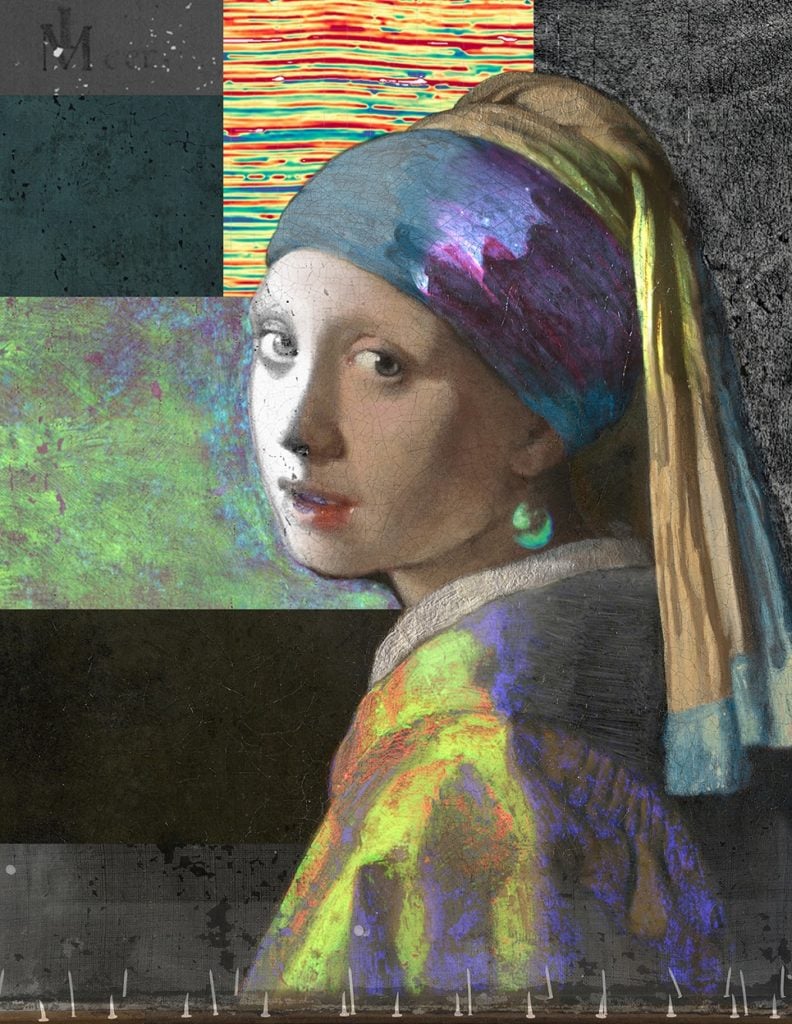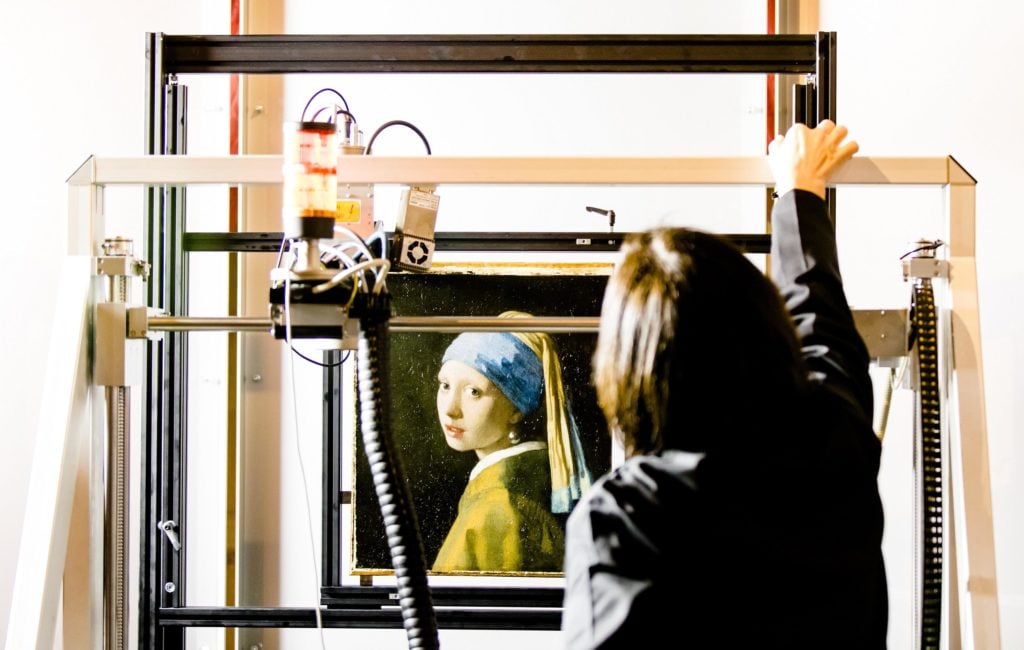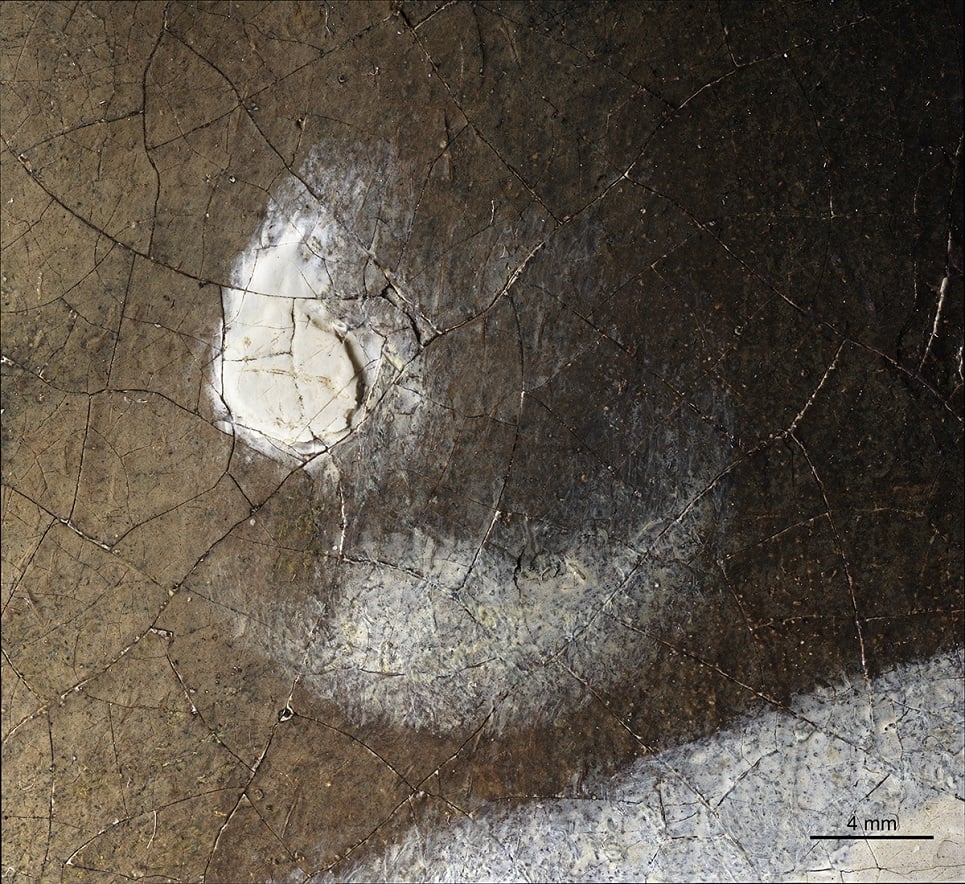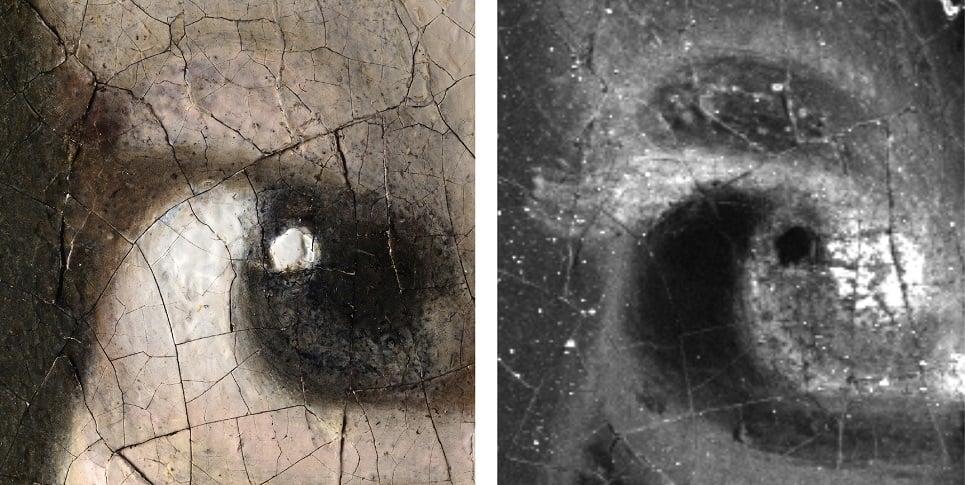Art World
The ‘Girl With the Pearl Earring’ Originally Had Eyelashes, Researchers Discover in a Series of New Revelations About Vermeer’s Masterpiece
The dark background originally depicted a green curtain.

The dark background originally depicted a green curtain.

Sarah Cascone

After two years of study, the Mauritshuis museum in The Hague has revealed surprising new findings about Girl With the Pearl Earring, the Dutch Golden Age masterpiece by Johannes Vermeer.
Researchers have discovered that the artist did, in fact, paint the girl with eyelashes, which have since faded from view. The canvas’s dark background, meanwhile, originally depicted a green curtain.
The museum released the findings of its “The Girl in the Spotlight” research project, begun in 2018, during an online presentation yesterday. (The institution is currently closed as part of the public-health lockdowns.)
“No, we didn’t find out who this young lady was or if she ever really existed,” museum director Martine Gosselink said in a video statement. “But we did get a little closer to her.”
The museum used new technological advances that have been developed since the last time the painting underwent study, in 1994, such as non-invasive imaging and scanning techniques, digital microscopy, and paint sample analysis. The research took place on-site in the museum galleries, inside a glass room built for the occasion.

A researcher at the Mauritshuis gallery in The Hague places Vermeer’s Girl with a Pearl Earring inside a scanner. Photo by Bart Maat/ANP/AFP via Getty Images.
Thanks to macro-X-ray fluorescence scanning and microscopic examination, the researchers were able to prove that Vermeer painted tiny hairs around both eyes, and that there were once folded drapery details behind her. Previously, the lack of eyelashes, and the shapeless void of the background was thought to indicate that Vermeer was painting an idealized face, rather than a real person.
The discovery of these hidden details, no longer visible to the human eye, “put the girl in a defined space and brings us a lot closer to her,” said Mauritshuis conservator and project leader Abbie Vandivere.
The researchers were also able to identify the sources of the pigments used in the oil painting. There was white lead from the Peak District in northern England, ultramarine blue from lapis lazuli in modern-day Afghanistan, cochineal red made from bugs in Mexico and South America. Thanks to a thriving trade in global goods, Vermeer was likely able to purchase these far-flung materials in his hometown of Delft.
“It’s surprising how much high-quality ultramarine Vermeer used in the girl’s headscarf,” Vandivere said. “This blue pigment was more valuable than gold in the 17th century.”

The pearl in Vermeer’s Girl with a Pearl Earring at 140-times magnification. Photo by Hirox Europe, Jyfel.
When the museum last investigated the painting, it found that a second highlight on the pearl wasn’t painted by Vermeer, but was actually a flake of paint that had fallen and reattached itself to the canvas. This time around, they’ve made note of the way he rendered the earring, adding just a few dabs of pigment atop the background to create the illusion of the jewel.
“It has no contour and also no hook to hang it from the girl’s ear,” said Vandivere.
The entire painting can now be closely examined online, zooming in to magnify each detail up to 140 times.

Left: 3-D digital microphotograph of the Girl’s right eye. Image courtesy of Hirox Europe, Jyfel. Right: The macro-X-ray fluorescence map for iron shows that Vermeer painted eyelashes using a brown paint. Image courtesy of Annelies van Loon, Mauritshuis/Rijksmuseum.
Investigating the canvas also revealed the order in which it was painted. Vermeer first used black lines to outline the composition, before painting the girl’s face, jacket, and collar. The blue headscarf and pearl earring were the final elements added to the canvas, save for the artist’s signature.
“The fact that she is still a mystery keeps people coming back and keeps her exciting and fresh,” said Vandivere. “It is good that some mysteries remain and everyone can speculate about her. It allows people their own personal interpretation of the girl. Everyone feels their own connection with the way she meets your eyes.”